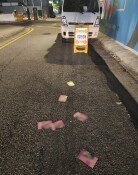National Territory is Developed by 11 Divided Areas
National Territory is Developed by 11 Divided Areas
Posted July. 07, 2005 02:29,
The Comprehensive National Territorial Plan concept that was centered in the Seoul Metropolitan area and southeastern part of Korea will change into a 7+1 multi-centered development system based on the seven metropolises and Jeju Island. In order to stop the reckless reconstruction of single and tenement houses, a residence management card system that regularly checks and manages the age and conditions of the residential buildings will be adopted.
In the area adjacent to North Korea, the construction of three peace towns will be constructed in Gyeonggi Provinces Paju, Gangwon Provinces Cheorwon, and Goseong. In the downtown area of big cities, a public transportation special zone that prohibits the entrance of cars will be established.
On July 6, the Ministry of Construction and Transportation (MOCT) prepared the Fourth Comprehensive National Territorial Plan Revision (2005~2020) and stated that it was in the process of negotiating with related organizations.
Until mid-July we will receive opinions of the related organizations, and in mid-September we will have a public hearing open to the people. By the end of this year we will decide on the final draft, said Chief of MOCT National Development Policy Bureau Yoo Deok-sang. He added, Starting next year the revised plans will be used to establish all types of laws and plans to make use of national territory.
According to the revised edition, in order to incite the balanced development of Korean land, the whole country will be divided into seven regions: the Seoul and Gyeonggi Metropolitan area, the Gangwon area, the Chungcheong area, the Jeonbuk area, the Gwangju area, the Daegu area, and the Busan area and Jeju, which will be developed as the 7+1 multi-centered axis with the three coastal axes on the East, West and South coasts.
Eight industrial complexes including Gyeongnam Provinces Changwon and Gyeongbuk Provinces Gumi will be reshuffled as innovative clusters where manufacturing, research, and personnel services will be all provided at once.
Gunsan (Saemangeum) and the administrative cities of Buyeo and Gongju and 12 other places will concentrate on growing into tourism cities. In order to prepare for the increase of exchange with Northeast Asia, the Northeast Asia Infrastructure Development Organization will be founded and the construction of a highway that connects the West Coast Highway to Haeju-Nampo-Shineuiju-Dalian (China)-Shanghai-Hong Kong is being pursued.
The transportation and information communication infrastructure will be greatly expanded. The total length of highways, 2,923 km in 2003, will increase to 6,000 km by 2020, and Gimpo Airport will operated as a regional hub in preparation for the conclusion of an FTA between Korea, China and Japan.
Furthermore, for the effective use and management of farmland, a farmland bank will be created, and buildings over a certain size will be obliged to install rainwater processing facilities.
Experts evaluated the revision as, The construction of an administrative city and moving public institutions, which were not in the original fourth comprehensive plan, have been significantly reflected in the revision. However, not offering specific ways to realize the plans should be fixed.
Jae-Seong Hwang jsonhng@donga.com



![반찬통 착색 고민 끝…‘두부용기’ 버리지 말고 이렇게 쓰세요 [알쓸톡]](https://dimg.donga.com/c/138/175/90/1/wps/NEWS/IMAGE/2026/01/09/133126593.3.png)


![[속보]이상민 前장관 징역 15년 구형…‘언론사 단전단수 지시’ 혐의](https://dimg.donga.com/c/138/175/90/1/wps/NEWS/IMAGE/2026/01/12/133139075.1.jpg)
